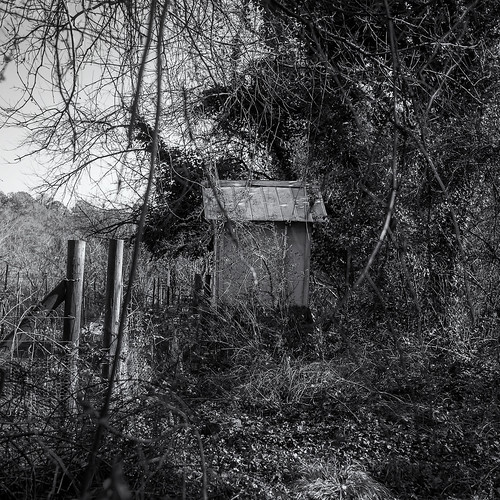Saturday, January 25, 2020
Pic(k) of the Week: Pay here?
There's a sculpture in Chattanooga, Tennessee, called "Casey Standing." It's a bronze, nude, slightly larger than life-size figure of a woman, installed outside, in the Southside district of the city, in 2013.
The sculptor is Alan Lequire, a Nashville, Tennessee, native, who "specializes in work of great scale, usually large public commissions."
I snapped the photo in the rain, on the afternoon of 18 January 2020. The juxtaposition of art and mundane commerce caught my attention. Pay here?
-----more-----
Labels: art, Chattanooga, Pic(k) of the Week, public art, rain, southeastern US, Tennessee
Monday, January 20, 2020
Centenarian brewery worker
And now, this!
Happy 100th birthday to America's (and the world's?) oldest brewery employee: Henry 'Zadie' Benesch. A World War II veteran, Mr. Benesch works at Union Craft Brewing in Baltimore, Maryland, USA.
On Jan. 19, 2020, Henry will celebrate his 100th birthday. He isn’t sure what’s kept him alive for a full century. 'I can’t answer that, but I say I drank from the fountain of youth when I was 17 and I smoked cigars when I was 22 and I’m still smoking cigars and drinking bourbon.' [...] “His badass-ness just rubs off on all of us,” said Union Craft Brewing co-founder Kevin Blodger.— Washington City Paper.
Blodger's fellow co-founder, Adam Benesch, is one of Henry Benesch's 16 grandchildren. On Saturday, he and the rest of Union Craft threw a 100th-birthday party for his grandfather.
-----more-----
Saturday, January 18, 2020
Pic(k) of the Week: Ferns in monochrome
In the winter woodland, two things, in particular, catch my eye: American beech trees and ferns (tracheophytes), the latter evolutionarily unchanged for hundreds of millions of years.
Here:
Native ferns are in mortal combat with invasive English ivy. Dearborn Park, in the city if Decatur, Georgia, USA. 12 January 2020.
-----more-----
Friday, January 17, 2020
The shameful occurrence one hundred years ago today, 17 January 1920.

One hundred years ago, today, the 18th Amendment to the United States Constitution took effect, on 17 January 1920.
Its issue, National Prohibition, would remain in effect for thirteen years. Beer, wine, and distilled spirits had become unconstitutional.
18th Amendment to the Constitution of the United States of America
Section 1. After one year from the ratification of this article the manufacture, sale, or transportation of intoxicating liquors within, the importation thereof into, or the exportation thereof from the United States and all the territory subject to the jurisdiction thereof for beverage purposes is hereby prohibited.
Section 2. The Congress and the several States shall have concurrent power to enforce this article by appropriate legislation.
Section 3.This article shall be inoperative unless it shall have been ratified as an amendment to the Constitution by the legislatures of the several States, as provided in the Constitution, within seven years from the date of the submission hereof to the States by the Congress.
Prohibition actually had passed a year earlier, on 16 January 1919, when the Nebraska legislature became the 36th state to approve the amendment, satisfying the Constitution's 2/3-of-the-states requirement. The amendment's wording mandated a year's delay until implementation. Praise be to the enlightened citizens of Connecticut and Rhode Island: their states were the only to vote nay.
To this day, the 18th Amendment remains the only amendment to the Constitution that eliminates rights. It did not, however, prohibit the drinking of "intoxicating beverages," 'merely' their manufacture, inter-state distribution, and sale. In its collective wisdom, Congress, authorized by section 2, defined an intoxicating beverage as anything containing in excess of one half of one percent alcohol by volume. That was, of course, just enough.
Prohibition would not be repealed until 5 December 1933, with the adoption of the superseding 21st Amendment.
Who or what was responsible? Distilling an answer might be reductive sociology, but four movers stand above the others: the alcohol industry itself, the Women's Christian Temperance Union, The Anti-Saloon League, and the 16th Amendment.
About the last, first. Since the Civil War, the federal government had been growing hand-in-hand with a bourgeoning population. Revenue from excise taxes and other fees had become insufficient. The 16th Amendment, ratified in 1916, constitutionalized the income tax, which up to that time, the Supreme Court had repeatedly disallowed. Its passage made excise taxes less integral. (Were that viewpoint as sanguine today!)
The temperance movement had been growing in strength for a hundred years, especially so in the early 20th-century. Its proponents laid crime, health problems, spousal abuse, and other social ills at the feet of the alcohol industry, which —with such as 'gin joints'— was far from blameless. And the beer industry, seeing beer as indeed the beverage of temperance —that is, not of prohibition but of moderation— did little, and too late, to stem the tide.
But maybe the arch-villain of the story is Wayne Wheeler, president of the Anti-Saloon League. Single-minded in his crusade against alcoholic beverages, Wheeler became, at one point, powerful enough to influence national elections. He was to alcohol as the virulently racist Harry Anslinger later was to marijuana.
The Woman's Christian Temperance Union continues today, albeit in more quiescent form. The Anti-Saloon League also survives, but now known more politely as the American Council on Alcohol Problems. And income tax? Well, you know that story.
-----more-----
Labels: 20th-century, alcohol laws, American history, beer history, prohibition
Thursday, January 16, 2020
2002 Old Foghorn (in 2020)
San Francisco's celebrated Old Foghorn brand has been virtually handmade by the brewers of Anchor Steam Beer, in one of the world's smallest and most traditional breweries, since 1975. Our barleywine style ale, the first of its kind in modern times in the United States, has a luscious depth of flavor that makes it ideal for sipping after dinner. It is made with fermenting yeast, fresh, whole hops, and 'first wort,' the richest runnings of a thick, all-malt mash. Old Foghorn is 'dry hopped' in the classic ale tradition and aged in our cellars until it attains the perfect balance of malty sweetness, estery fruitiness, and exquisite hop character for which it is known throughout the world.— neck label
Old Foghorn Barleywine Style Ale
(~ 8% alcohol-by-volume)
— Anchor Brewing (San Francisco, California).
- Brewed and bottled —in 'nip' bottles (7.1 fluid ounces = 210 ml)— in 2002.
- Tasted on 15 January 2020.
Anchor Brewing brewed this bottle when the brewery was still the grandaddy of independents. (It's now owned by Japanese conglomerate, Sapporo.)
Drinking it was like drinking 'craft' beer history but with a buzz. All that was missing was a chunk of Maytag Blue cheese.
No scores; only descriptions.
-----more-----
Labels: Anchor, barleywine, beer, beer review, craft beer history, drinking again, vintage, west coast
Saturday, January 11, 2020
Pic(k) of the Week: Hut and fence in forest
Like a chaotic frame, branches and vines appear to curve around a hut and fence. 1 January 2019.
This 77-acre property —of which 22 acres is woodland and pond— lies on the grounds of the former United Methodist Children's Home. The city of Decatur, Georgia, purchased the property in 2017. As a condition of the sale, the woodlands —which some refer to as Seminary Wood— must remain undeveloped in perpetuity.
The fenced-in plot (to the left) is leased by Decatur’s Kitchen Garden, a community garden space for refugee and immigrant growers in the area.
-----more-----
Monday, January 06, 2020
2019's Pic(k) of the Week retrospective
Every Saturday since 29 August 2009, I have posted a
Pic(k) of the Week: one in a weekly series of photos taken (or noted) by me, often, but not always, with a good fermentable as the subject.
These are those of 2019.
| January | ||||
 |
 |
 |
 |
|
| February | ||||
 |
 |
 |
 |
|
| March | ||||
 |
 |
 |
 |
 |
| April | ||||
 |
 |

|

|
|
| May | ||||
 |
 |
 |
 |
|
| June | ||||
 |
 |

|

|

|
| July | ||||
 |
 |
 |
 |
|
| August | ||||
 |
 |

|
 |
|
| September | ||||
 |
 |

|
 |
 |
| October | ||||
 |
 |
 |
 |
|
| November | ||||
 |
 |
 |

|

|
| December | ||||
 |
 |
 |
 |
**************
What's up?
Examining only the last five years, here are how my selections have changed:| 2019 | 2018 | 2017 | 2016 | 2015 | |
|---|---|---|---|---|---|
| Beer | 10 | 12 | 28 | 34 | 34 |
| Brewery/Pub | 12 | 5 | 8 | 16 | 20 |
| Cask ale | 1 | 2 | 5 | 0 | 10 |
| Wine | 1 | 0 | 1 | 0 | 3 |
| Whiskey/Liquor | 0 | 1 | 0 | 0 | 2 |
| Food | 2 | 3 | 4 | 8 | 5 |
The figures don't reflect a sum, as a category may be a subset of another: such as breweries also under beer, food also under brewpub/brewery, etc. But the trend has unmistakenly been from fermentables to 'artsy.'
In fact, of the fifty-two selections in 2019, thirty-four, or 65%, were NOT of a fermentable, comestible, or related subject. Twenty-four (46%) images were of 'nature'; eleven (21%) were of structures (not including breweries); eleven images (21%) were in black-and-white (of which only four were beer-related); and six (11%) were focused on people, primarily or tangentially.
For the inaugural Pic(k) of the Week of 2020, I posted —on Saturday, 4 January 2020— an image of...a beer! And the cycle began anew.
-----more-----














